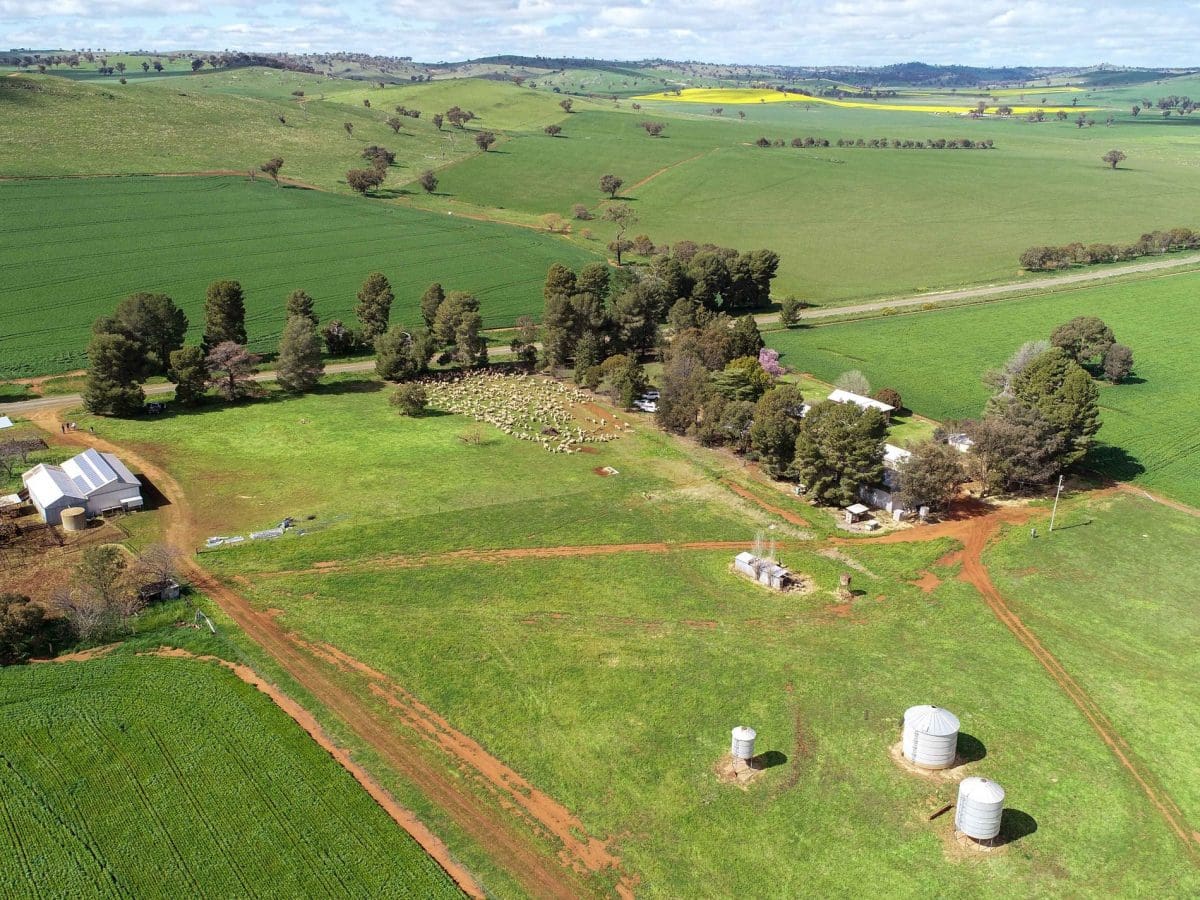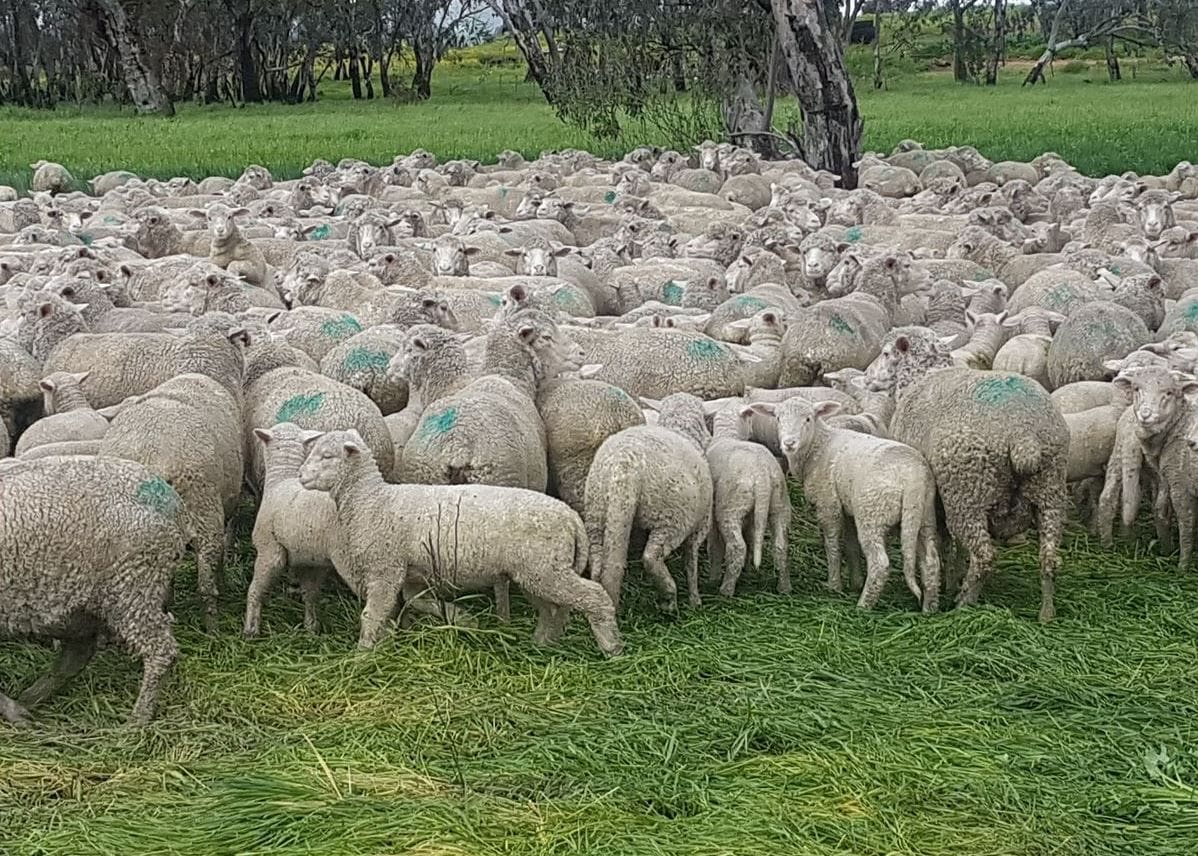
Moeyan at Berthong recently sold to a neighbour at a price in line with the top end of recent district sales. Photo: LAWD/Delta
FAMILY operations able to capitalise on record low-interest rates are outstripping investment funds in their preparedness to pay up to $12,000 per hectare for mixed-farming country in south-eastern Australia’s medium to high-rainfall zones.
This is despite handsome profits being available from properties with grazing and cropping income streams, and has been evidenced by a run of sale of family-to-family or corporate-to-family sales in recent months.
The latest is Westchester’s sale of the Southern Riverina Aggregation to local farming and mixed-farming interests.
Argyle Capital Partners managing director Kim Morison said while similar opportunities for capital growth existed for mixed-farming and straight cropping properties, fund appetites were greater for cropping investments because they were more straightforward to manage.
“If a family wants to diversify its income stream so it isn’t all in the one basket, mixed farming is a sensible way to do it; funds are more interested in buying and aggregating and then specialising,” he said.
“They’ll shy away from a mixed farm at a property level, but they’re building portfolios, and they might have a mixed fund to give investors returns that get exposure to that diversified income.
“For a fund, they need to think about how they attracted capital in the first place.
“If investors want exposure to grains, they’ll invest in a grains portfolio; it’s the same for livestock.”
Exceptions exist
Some fund-owned cropping properties can run livestock, but separately to the title’s day-to-day operations.
“Funds might find a part of the place is more grazing than cropping country, so they can get an agistment or a lease agreement to cover that.”
Westchester, Macquarie’s Lawson Grains and Viridis Ag, and Warakirri Asset Management’s Warakirri Cropping and Daybreak Cropping are the investment-fund heavyweights in Australian cropping.
Between them, they crop around 500,000ha across mainland Australia, and run little to no livestock.
Macquarie’s Paraway Pastoral Company is the largest corporate exception to the rule.
While predominantly a sheep and cattle operation, around 20,000ha in total of Paraway’s eastern Australian properties is farmed to provide fodder for livestock and a cash-cropping income stream.
Through its AAM Diversified Agriculture Fund (ADAF), AAM Investment Group (AAMIG) has proved unusual in its willingness to buy and operate mixed-farming properties.
The ADAF portfolio opened with Sunshine and Round Cowal at Forbes in central NSW, and in September added nearby Bergen Park and Warili to give it total assets worth around $170 million.
“We play in the mid-market space,” AAMIG managing director Garry Edwards said.
The fund’s interests in the Forbes district focus on sheep and cropping and now cover 10,359ha.
They are complemented by poultry operations in South Australia, as well as pastoral assets in Queensland.
Mr Edwards said the fund sought “genuine diversity” with exposure to cropping, and assets that had not been fully developed in districts of around 500 millimetres in annual average rainfall.
“For our investors, it gives them a risk-adjusted return so they’re not so exposed to a single commodity.”

Ewes and lambs on Sunshine, which is one of four mixed-farming properties south-west of Forbes now held by AAMIG’s AAM Diversified Agriculture Fund. Photo: Johnston Rural Group
Mr Edwards said the fund sought a 6-7 per cent dividend plus capital growth.
“Where possible, we look to invest further to grow the value of the asset.”
While family-owned investments in mixed farming are open ended, Mr Edwards said AAMIG’s funds looked to a minimum lifespan of seven to 10 years.
“We believe it needs to be at least that long to go through the production cycles you get in farming.”
Mr Edwards said AAMIG investors included high net-worth individuals and superannuation funds seeking a mixed-farming income.
Challenge of mixed farming
While heady lamb, sheep and cattle prices, coupled with buoyant grain prices, have brought mixed-farming operations some astounding returns, they are not made without risk.
For livestock, vigilance is required to ensure basic feed and water needs are met year round, and nutrition keeps breeding stock and progeny healthy and productive.
Mixed farming also involves ensuring maximum performance is gained from dual-purpose varieties of canola and cereals, and that stock is turned off at target weights.
On top of that comes cash cropping, hay production and stock work.
For corporates or investment funds, the management challenge lies in watching crops and livestock with equal focus, and sharing labour and capital between both enterprises.
Finding an infrastructure mix that suits livestock, where fencing is essential, and large-scale cropping, where fences can be a hindrance, can also be problematic.

HAVE YOUR SAY